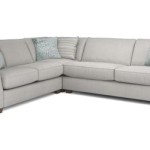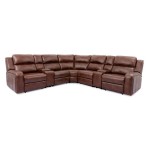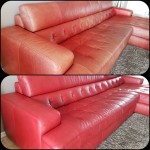Sofa Bed Won't Open: Troubleshooting and Solutions
Sofa beds, also known as sleeper sofas, offer a versatile space-saving solution for homes, providing both seating and sleeping accommodations. However, a common frustration arises when the bed mechanism malfunctions and refuses to open, rendering the sofa bed unusable. Understanding the underlying causes and implementing appropriate troubleshooting steps is crucial to resolving this issue. This article provides a comprehensive guide to diagnosing and addressing the problem of a sofa bed that won't open.
The mechanical complexity of sofa beds makes them susceptible to various issues. The opening and closing mechanisms typically involve a series of hinges, levers, and support structures that work in concert. Any disruption in this system can prevent the bed from deploying correctly. Identifying the specific source of the malfunction is the first step towards a successful resolution.
Identifying Common Causes of a Stuck Sofa Bed Mechanism
Several factors can contribute to a sofa bed failing to open. A systematic approach is required to isolate the problem. The following are some of the most frequent culprits:
Obstructions: This is often the simplest and most overlooked cause. Objects lodged within the mechanism, such as blankets, pillows, toys, or even small debris, can physically block the movement of the internal components. A thorough visual inspection is essential before attempting any forceful action. Check all accessible areas around the hinges, levers, and the frame itself for any signs of obstruction.
Bent or Damaged Frame: The frame of the sofa bed is the foundation upon which the entire mechanism operates. If the frame is bent, warped, or otherwise damaged, it can misalign the various components, preventing them from moving freely. This damage can result from excessive weight, improper use, or accidental impact. Look for visible signs of bending, cracks, or breaks in the metal or wood frame.
Sticking Hinges and Levers: Hinges and levers are critical for the smooth articulation of the sofa bed. Over time, these components can become stiff or seized due to dust, dirt, rust, or lack of lubrication. This restricts their range of motion and prevents the bed from opening fully. Examine each hinge and lever point for signs of corrosion or excessive friction.
Mechanical Binding: This refers to a situation where the various parts of the mechanism are jammed against each other due to misalignment or internal stresses. This can occur if the sofa bed has been subjected to uneven weight distribution or if it has been forced open or closed improperly. Identifying mechanical binding often requires careful observation of the mechanism as it is being operated, noting any points where movement is restricted.
Broken Springs or Cables: Some sofa bed designs utilize springs or cables to assist with the opening and closing process. These components can break or become detached, leading to a loss of tension and preventing the mechanism from functioning correctly. Inspect the springs and cables for any signs of damage or detachment.
Troubleshooting Steps and Potential Solutions
Once the potential causes have been identified, the next step is to implement specific troubleshooting steps to address the problem. The following outlines a series of actions that can be taken to resolve a stuck sofa bed mechanism:
Visual Inspection and Obstruction Removal: Begin by carefully inspecting the entire mechanism for any visible obstructions. Use a flashlight to illuminate hard-to-reach areas. Remove any objects that are blocking the movement of the components. Try operating the mechanism gently after removing each obstruction to see if that resolves the issue. Avoid applying excessive force, as this could worsen the problem.
Lubrication of Hinges and Levers: If the hinges and levers appear stiff or seized, apply a suitable lubricant such as WD-40 or silicone spray. Spray the lubricant directly onto the pivot points of each hinge and lever. Work the mechanism back and forth to distribute the lubricant and loosen any corrosion or buildup. Wipe away any excess lubricant. Repeat this process several times if necessary.
Frame Inspection and Repair (if possible): Thoroughly examine the sofa bed frame for any signs of bending, warping, or damage. If the damage is minor, it may be possible to straighten the frame or reinforce it with additional supports. However, if the damage is severe, it may be necessary to replace the frame entirely. Consult with a furniture repair professional to assess the extent of the damage and determine the best course of action.
Addressing Mechanical Binding: Identifying the specific point of mechanical binding requires careful observation. As you attempt to open the sofa bed (gently), pay close attention to where the mechanism is getting stuck. If you can identify the point of binding, try applying gentle pressure to that area while simultaneously attempting to open the bed. Avoid using excessive force, as this could damage the mechanism further. If the binding is severe, it may be necessary to disassemble part of the mechanism to realign the components. This is best left to a skilled repair person.
Replacing Broken Springs or Cables: If a spring or cable is broken or detached, it will need to be replaced. Identify the type and size of the spring or cable required. These components can often be purchased from hardware stores or online retailers. Carefully attach the new spring or cable, ensuring that it is properly tensioned. Consult the sofa bed's instruction manual or a repair guide for specific instructions on replacing these components.
Checking the Release Mechanism: Some sofa beds have a release mechanism that needs to be activated before the bed can be opened. This mechanism may be a lever, button, or latch. Ensure that the release mechanism is properly engaged before attempting to open the bed. Refer to the sofa bed's instruction manual for the location and operation of the release mechanism.
Seeking Professional Assistance: If the troubleshooting steps outlined above do not resolve the issue, it may be necessary to seek professional assistance from a furniture repair technician. Attempting to repair a complex sofa bed mechanism without the necessary skills and tools can potentially lead to further damage or injury. A qualified technician will have the expertise to diagnose the problem accurately and implement the appropriate repairs.
Preventive Measures to Maintain Sofa Bed Functionality
Preventive maintenance is crucial for extending the life and functionality of a sofa bed. Regular care and attention can minimize the risk of mechanical problems and ensure smooth operation. The following are some preventive measures that should be considered:
Regular Cleaning and Dusting: Periodically clean and dust the sofa bed, paying particular attention to the hinges, levers, and frame. This will help to prevent the buildup of dirt and debris that can contribute to stiffness and binding. Use a vacuum cleaner with a brush attachment to remove dust from hard-to-reach areas. Wipe down the metal and wood components with a damp cloth. Avoid using harsh chemicals or abrasive cleaners, as these can damage the finish.
Periodic Lubrication: Lubricate the hinges and levers of the sofa bed every few months to maintain smooth operation. Use a suitable lubricant such as WD-40 or silicone spray. Apply the lubricant sparingly to the pivot points of each hinge and lever. Work the mechanism back and forth to distribute the lubricant. Wipe away any excess lubricant.
Proper Weight Distribution: Avoid placing excessive weight on any one area of the sofa bed. Distribute weight evenly across the surface to prevent uneven stress on the frame and mechanism. Avoid sitting or lying on the edge of the sofa bed, as this can put excessive strain on the frame.
Careful Opening and Closing: Open and close the sofa bed gently and deliberately. Avoid forcing the mechanism, as this can damage the components. Follow the manufacturer's instructions for opening and closing the bed. If the mechanism feels stiff or resistant, stop and inspect for any obstructions or binding.
Regular Inspection: Periodically inspect the sofa bed for any signs of damage or wear. Check the frame for cracks or bends, the hinges and levers for stiffness or corrosion, and the springs and cables for damage or detachment. Address any issues promptly to prevent them from escalating into more serious problems.
Storing Blankets and Pillows Properly: When the sofa bed is in its sofa configuration, ensure that blankets and pillows are stored properly and do not obstruct the opening mechanism. Use storage compartments or designated storage bags to keep these items organized and out of the way. This will help to prevent them from becoming lodged in the mechanism and causing it to malfunction.
By understanding the potential causes of a stuck sofa bed mechanism and implementing the appropriate troubleshooting steps and preventive measures, individuals can effectively address this common problem and maintain the functionality of their sofa beds for years to come.

3 Simple Ways To Open A Sofa Bed Wikihow

For Some Reason My Sofa Bed Won T Open Now And I M Not 51 Off

Sofa Bed Foldable Dual Purpose Office Sofas Folding 1 8m Upgraded Fabric Technology Cloth Design Multi Functional Living Room Give Two Free Pillows Lazada Ph

Best Sleeper Sofas 12 Couches Your Guests Won T Mind Sleeping On Time Stamped

Best Sleeper Sofas 12 Couches Your Guests Won T Mind Sleeping On Time Stamped

Modern Sofa Beds Comfortable Sleepers Structube

The 11 Best Sofa Beds In 2024 For Style And Comfort To Make Most Of Your Space

Sofa Guide For 2024 Reviews By Wirecutter

The 11 Best Sofa Beds In 2024 For Style And Comfort To Make Most Of Your Space
Sofa Beds Large And Small Bed Retailer Of The Year Dreams








